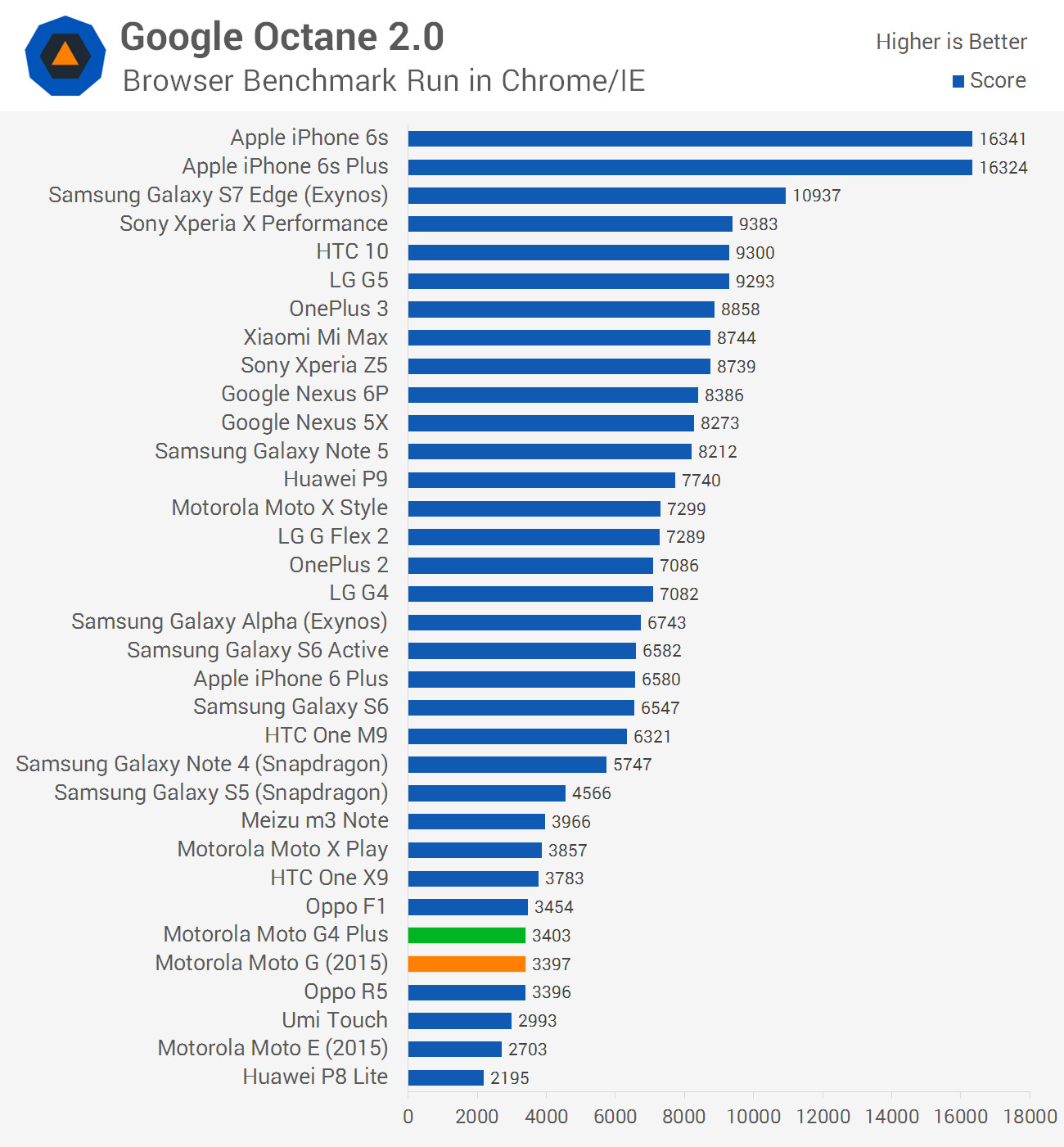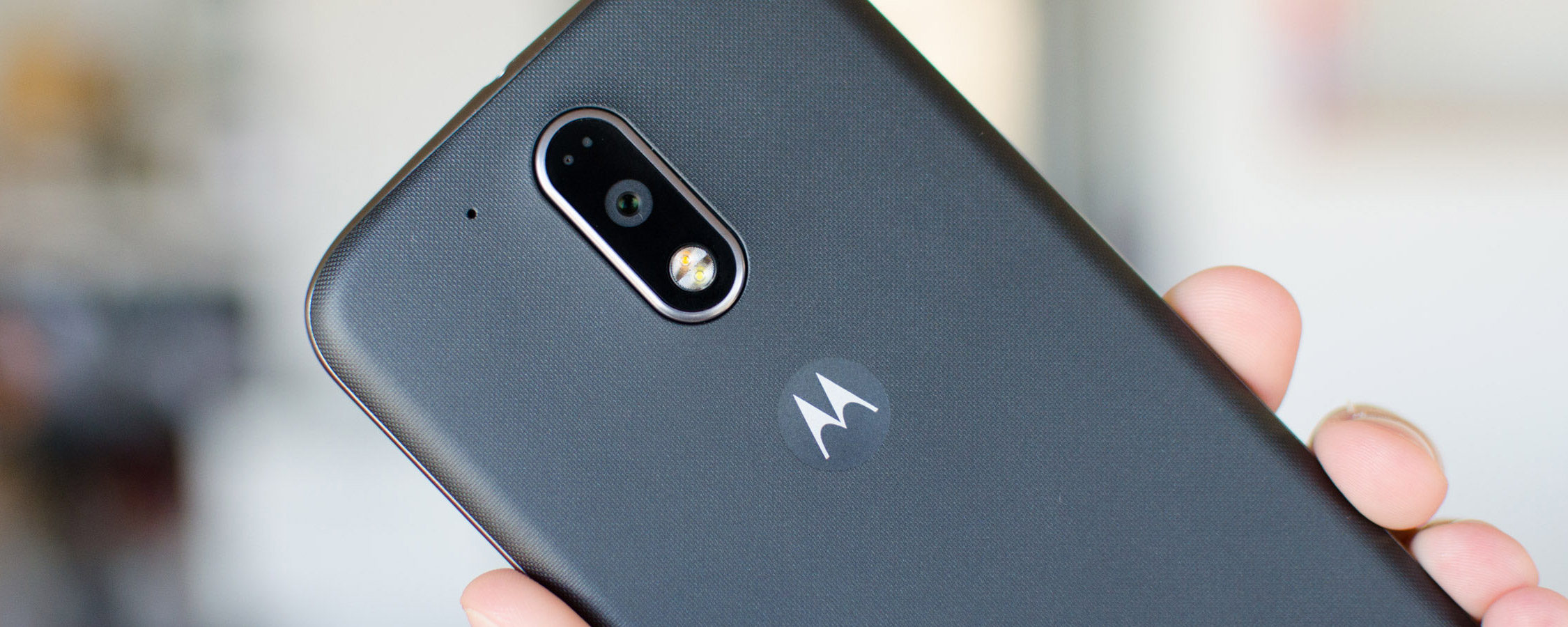Hardware Overview and System Performance
The Moto G4 Plus comes with a Snapdragon 617 SoC, which is an evolutionary upgrade on the Snapdragon 616, itself an upgrade on the Snapdragon 615. Unlike the move to the S616, the S617 doesn't simply alter the clock speeds of the CPU cores: it also improves memory bandwidth and wireless radio support.
The S617 comes with an octa-core CPU configuration split into two four-core clusters. All cores are ARM Cortex-A53s, with the "big" cluster clocked at 1.52 GHz, and the "LITTLE" at 1.21 GHz. Interestingly, the S617 actually features a clock speed reduction on the big cluster, which sat at 1.7 GHz on the S616. It's odd that Qualcomm would look to decrease CPU performance here, although it may be for power consumption reasons.
The Adreno 405 GPU in the S617 is still clocked at 550 MHz, so there are no changes here compared to the S616. The memory subsystem uses 32-bit LPDDR3, although a clock speed increase to 933 MHz pushes memory bandwidth up to 7.5 GB/s. The amount of RAM you get depends on the amount of storage: 2 GB of RAM accompanies 16 GB of storage, or 4 GB with 64 GB.
The S617 includes an updated X8 LTE modem, which supports up to Category 7 LTE (up from Category 4 in the S616), however the Moto G4 Plus itself only supports Category 4 LTE. The US model supports by far the most LTE bands (12), while the standard and Indian models only support 5 bands, uniquely including band 20 and 40 respectively. Five-band HSPA support is included with all models.
Other connectivity includes Wi-Fi 802.11a/b/g/n/ac on 2.4 GHz and 5.0 GHz, Bluetooth 4.2, and A-GPS. There's no NFC in this device, which probably could have been included at its $250 price point.
General system performance from the Moto G4 Plus is average. This handset doesn't really feel any faster to use than the 2015 Moto G, which is powered by a Snapdragon 410 SoC, and despite the hardware advantages of the S617 there's still a "budget" feel to the performance of the G4 Plus. This is somewhat concerning, as last year's Moto G is significantly cheaper than the G4 Plus.





The main issue here is the S617's CPU performance. Despite having four more cores than the S410, performance in CPU limited workloads is only 21 percent better, which is a little less than the difference in clock speeds between the 'big' cores. This highlights a key point about eight-core CPUs: the last four cores don't matter at all.
21 percent performance improvements are decent, but this average is dominated by a huge performance gain in PCMark's photo editing test. Take out that outlier, and gains drop to under 10 percent, which is well below what I'd expect for the hardware differences. Considering both the Moto G 2015 and the Moto G4 Plus come with the same amount of RAM (2GB) in their 16 GB models as well, you can't expect any true generational gains in system performance.

